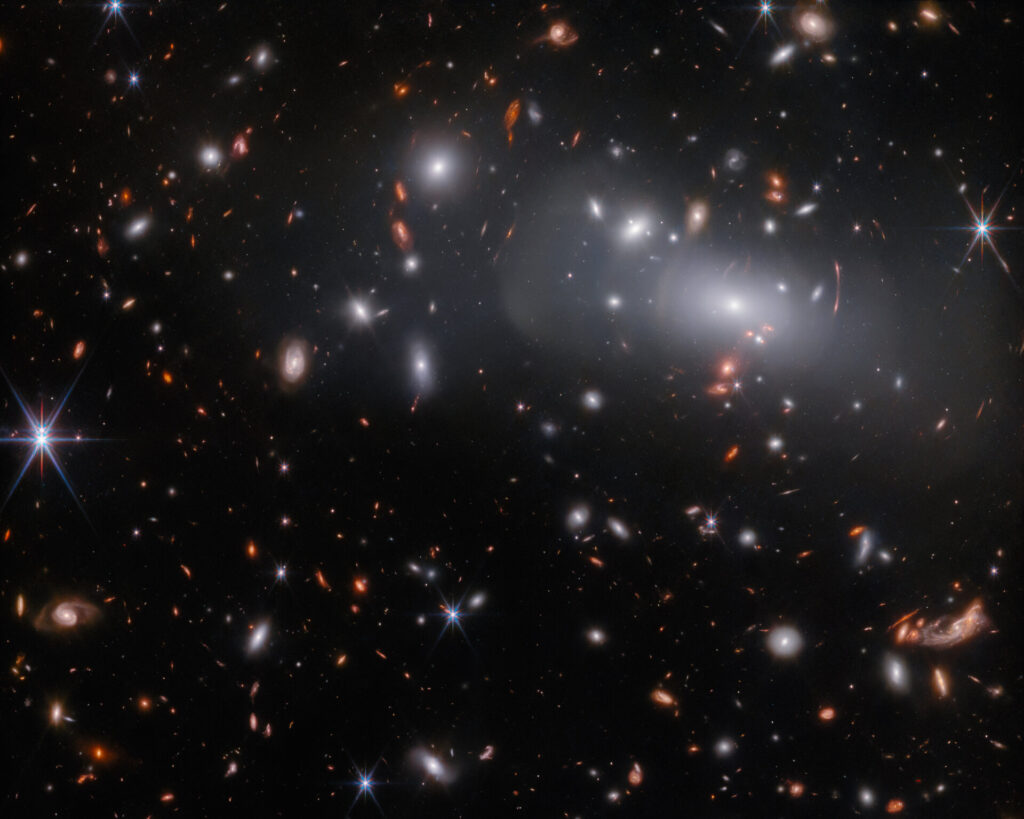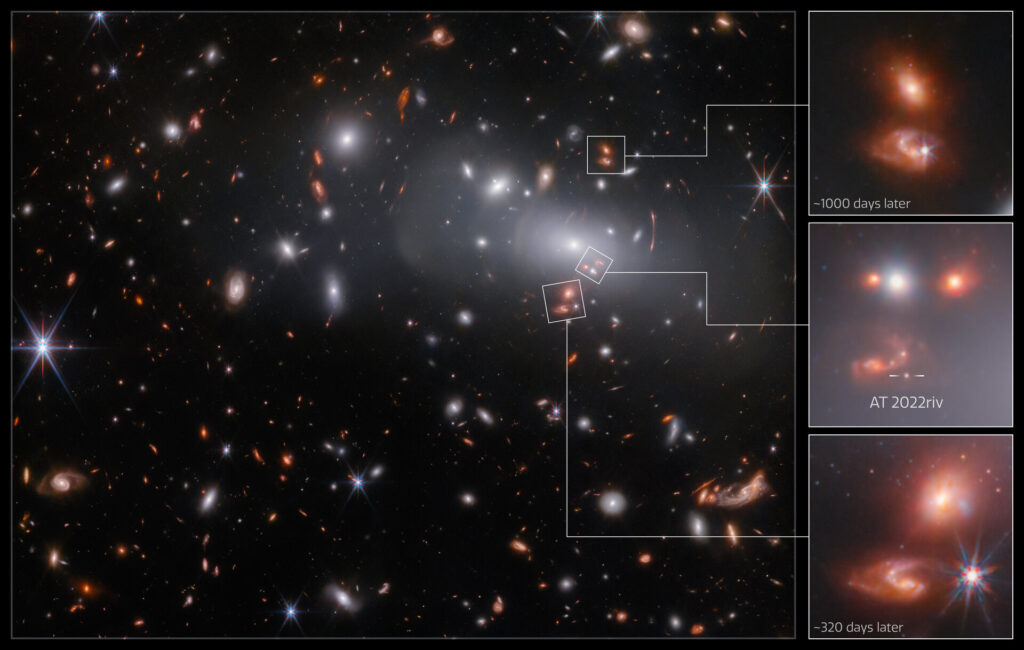The James Webb Space Telescope (JWST) has obtained a triple image of a galaxy in which a supernova flared up. This was done thanks to a phenomenon known as gravitational lensing.

The effect of gravitational lensing occurs when a massive object is located on the line connecting the observer and a more distant background radiation source. As a result, the gravity of this object, like a lens, can distort and amplify light from a distant source, and sometimes even duplicate its image.
In this case, the gravitational lens was the galactic cluster RX J2129. It is located at a distance of 3.2 billion light-years from Earth in the direction of the constellation Aquarius. The lens “tripled” a more distant background galaxy in which a supernova flared up. At the same time, since due to the gravitational curvature, the light rays from it move in different ways, each of the three images shows a different moment from the life of the galaxy. On one of them, the supernova is at its peak brightness. On the other two, which are about 320 and 1000 days older, it is no longer visible.

Supernova observations were not an accident. Initially, it was discovered in the Hubble telescope images, after which the JWST was aimed at it. The event was classified as a type Ia supernova flare. And in this case, the light from the supernova was also used to determine the mass of the cluster RX J2129 by analyzing the degree of its distortion.
Recall that recently the Hubble telescope also photographed a gravitational lens in the constellation Cetus.
According to https://www.esa.int
Follow us on Twitter to get the most interesting space news in time
https://twitter.com/ust_magazine

